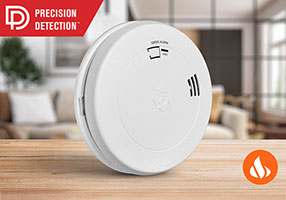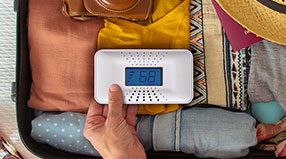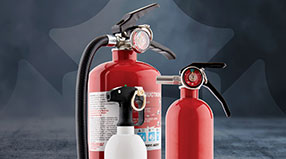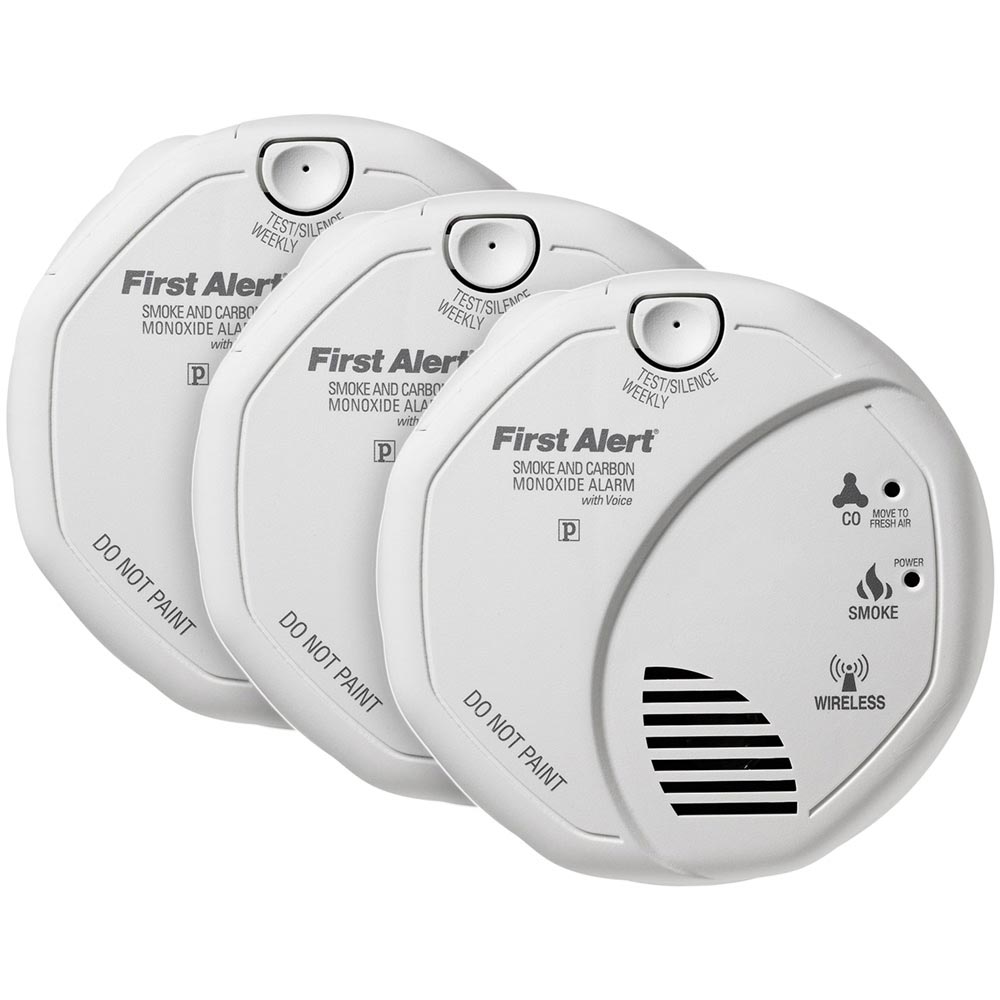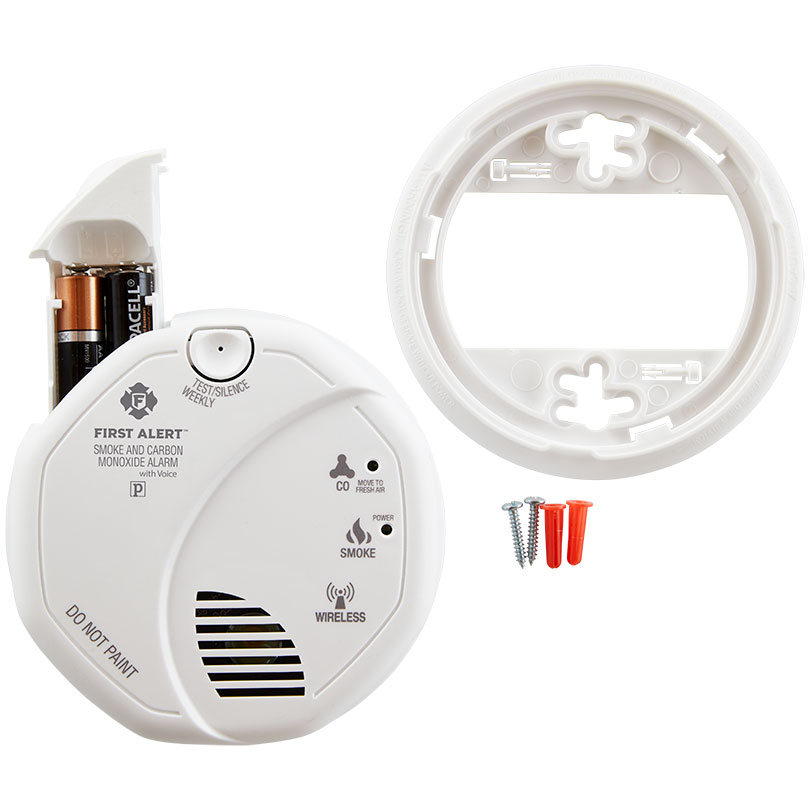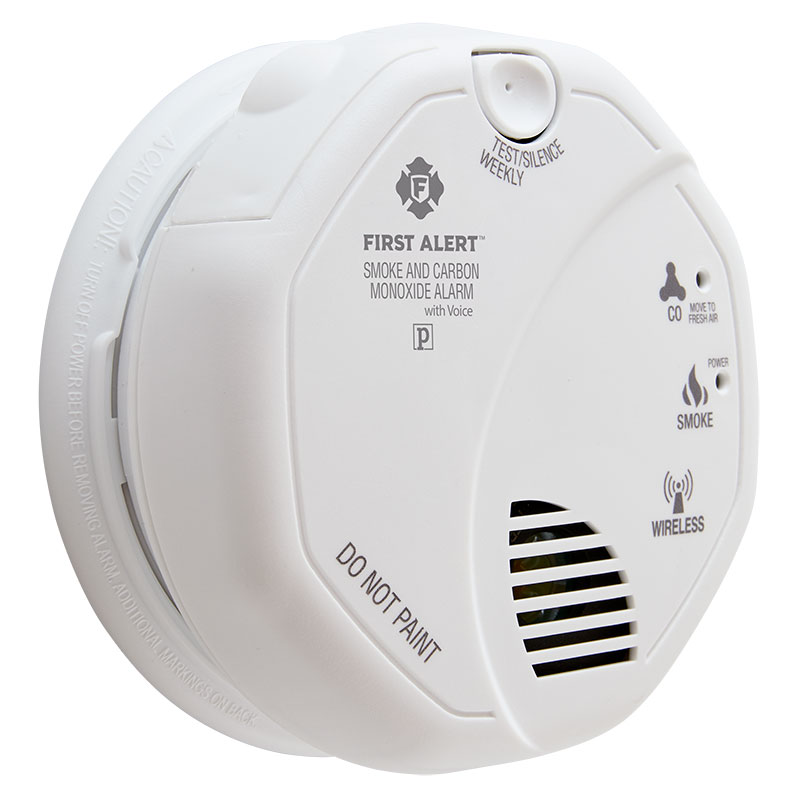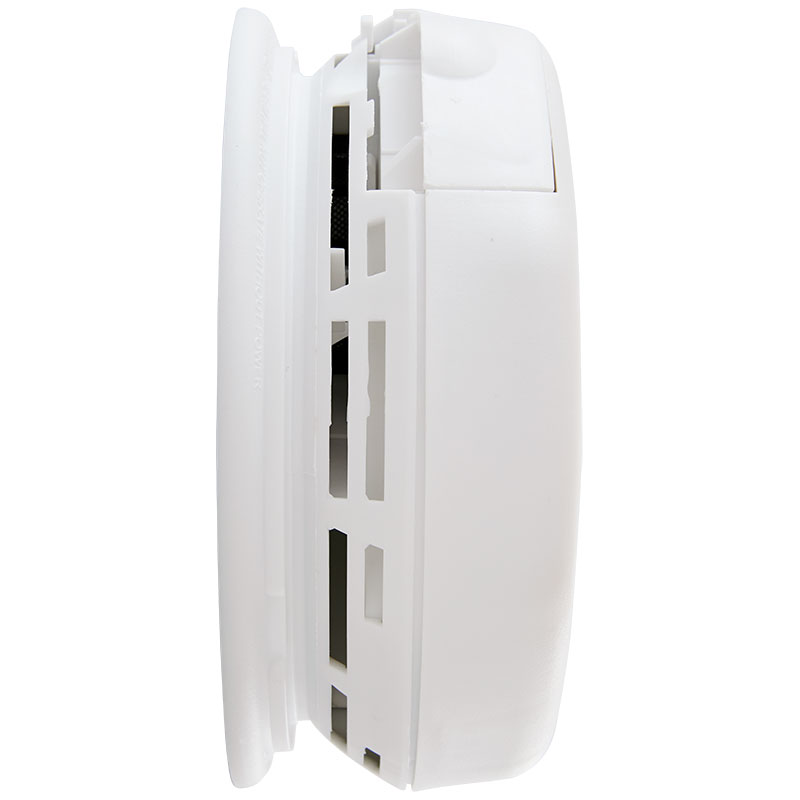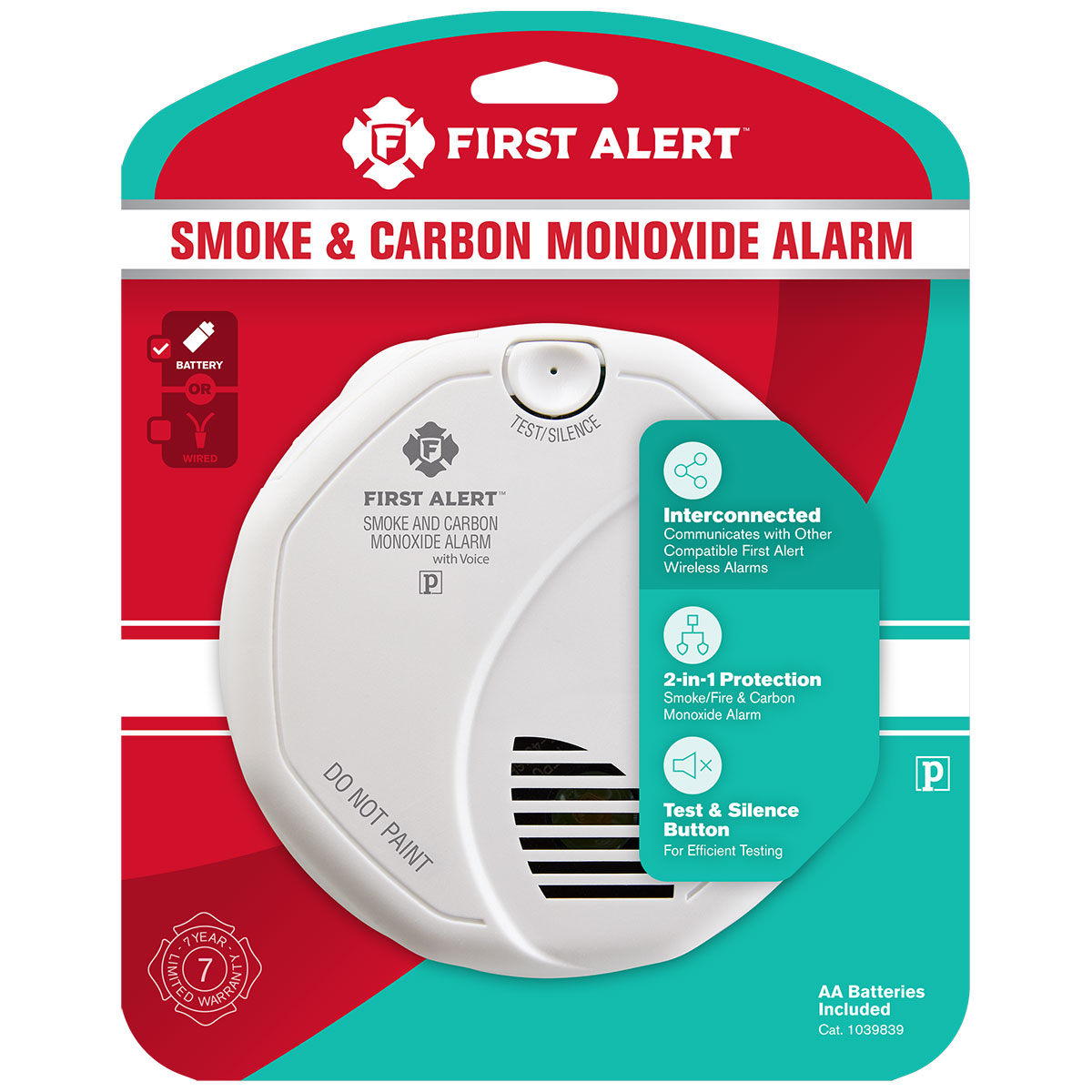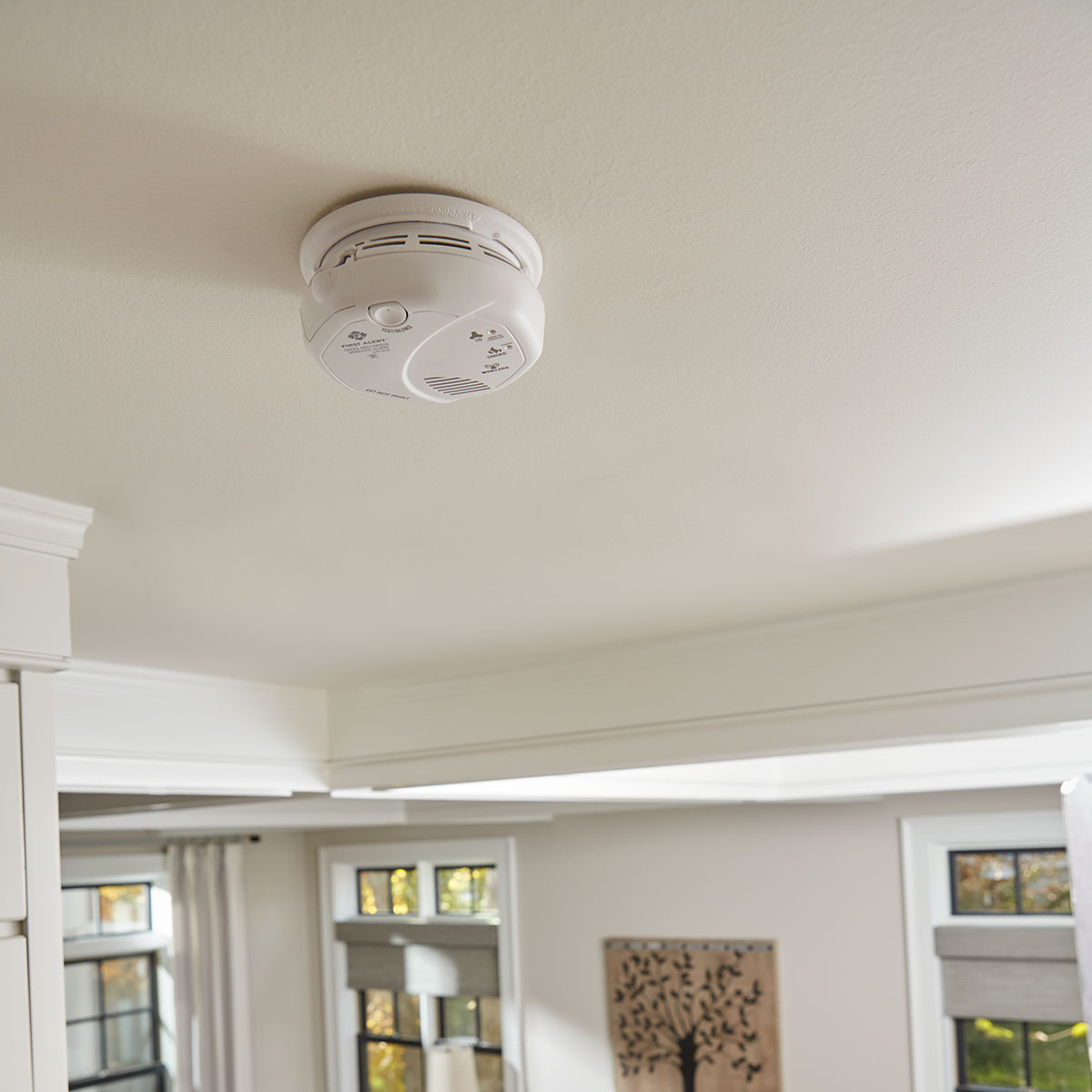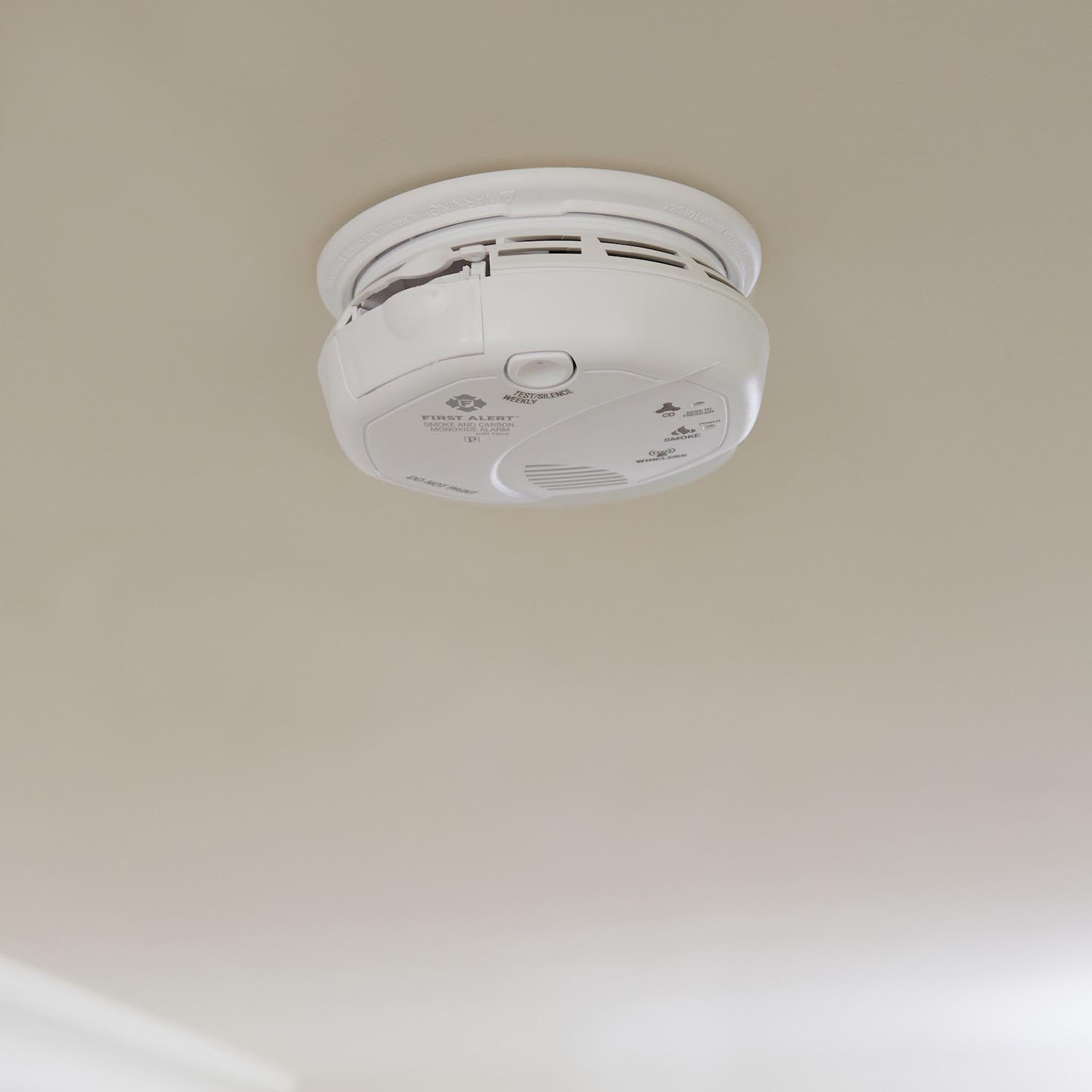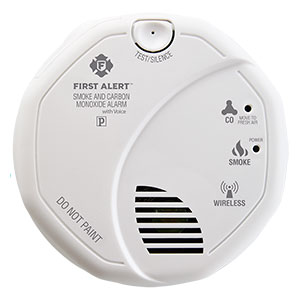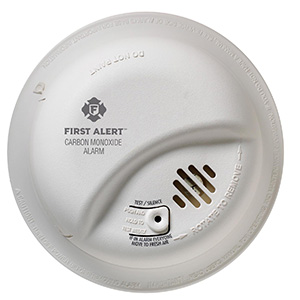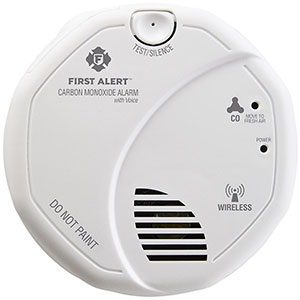3 Pack of First Alert Wireless Interconnected Talking Smoke and Carbon Monoxide Alarm
Wireless Interconnect Talking Battery Operated Smoke & CO Alarm
First Alert's series of Wireless Talking Battery Operated Smoke & CO Alarms effectively eliminates the need for a wired connection and operates entirely on batteries. The latest advancement in a series celebrated for its intuitive use of technology, the First Alert Wireless Interconnect collection offers an abundance of options when it comes to creating the ideal safety network. Wirelessly inter-connectivity allows you to connect up to 18 alarms (a maximum of 12 smoke alarms and 6 carbon monoxide alarms) within your home! Voice can easily be programmed for alarm's location within your home. (this feature comes with 11 pre-programmed choices) Voice also notifies which hazard is being detected. If the alarm set in your kitchen senses smoke, all of your First Alert Wireless Interconnect alarms will announce: 'Warning, evacuate! Smoke in the Kitchen!' This feature allows for the maximum in whole home protection. The communication distance (range) between any two First Alert Wireless Interconnect Alarms is typically 50 ft. (15 meters) inside of a home. Some features of a home, such as the number of floors, number/size of rooms, furniture and types of building materials used may reduce the range of wireless interconnect alarms.
First Alert Wireless Interconnect Talking Battery Operated Smoke & CO Alarms utilize an Electrochemical Sensor that allows for optimal efficiency in detecting carbon monoxide. The realization of Photoelectric Smoke Sensing Technology will effectively reduce the number of nuisance alarms triggered by cooking smoke and shower steam. This alarm comes equipped with a Mute Button that serves the dual purpose of quickly silencing your alarm as well as testing its function. The combination of an End of Life Timer and an increased emphasis on the unit's 85 dB sound output establishes peace of mind, while the inclusion of Dual Smoke and Carbon Monoxide Sensing all but guarantees the safest of experiences. This alarm carries a 7 year limited warranty and complies with UL217 and UL2034 Standards.
This Wireless Interconnect alarm is for you if:
- You want to build a safety network of interconnected alarms in your home without the cost and hassle of wiring.
- You want the earliest notification of where the danger is in your home.
Where To Place Smoke Alarms:
- One in every bedroom, and at least one on every level of the home.
Where To Place Carbon Monoxide Alarms:
- One on every level of the home and one in each sleeping area
The First Alert Wireless Interconnect Talking Battery Operated Smoke & Carbon Monoxide Alarm, SCO501CN-3ST can be preprogrammed with the following locations:
- Basement
- Kitchen
- Child’s Bedroom
- Living Room
- Dining Room
- Master Bedroom
- Family Room
- No Location
- Guest Bedroom
- Office
- Hallway
- Utility Room
Actual battery service life depends on the particular design of your smoke or carbon monoxide alarm and the environment in which it is installed. All kinds of alarm batteries specified in the user's manual are acceptable replacement batteries. Regardless of the manufacturer's suggested battery life, you MUST replace the batteries immediately once the unit starts "chirping" (the "low battery warning"). It is recommended that you change the batteries in your alarms when you change your clocks for daylight saving time. Also consider replacing your current alarms with 10-Year Life Alarms that never require a costly battery replacement for the ten year life of the alarm. This 10-Year series is available in smoke, carbon monoxide and combination alarms.
Other reasons include: It could be a different device or appliance such as a security system, monitor, carbon monoxide alarm, or other device which has a similar low battery or alert signal. Some of the same factors that cause unwanted alarms can cause intermittent alarms: dust and insects in the alarm or power interruptions in hardwired alarms. Improper wiring on AC or AC/DC smoke alarms. AC alarms will chirp every 5 seconds if the interconnect wire is grounded. The orange interconnect wire should NEVER be grounded; it should only be used to interconnect other smoke alarms or compatible devices.
- You may not be holding the test button down long enough. Try holding it down for up to 10 seconds (20 seconds on photoelectric models) .
- Your battery may not be installed properly or snapped all the way in place. Even if the alarm sounded briefly when the battery touched the terminals, you still need to make sure it is snapped securely in place. If the battery is loose, in cannot power the smoke alarm properly. After installing new batteries, be sure to test your smoke detector.
- Your AC power may not be on. AC and AC/DC units will have a power indicator light (red or green) that shines continuously when they are receiving electrical power.
- If you have a 10-Year model, the smoke alarm may not have been properly activated. If the tab broke away before the alarm was activated, you can use a toothpick to move the switch over to test the alarm.
- There may be insufficient battery power, try new batteries.
- Problems with voltage or insufficient electrical power (brown out) may cause a continuous weak sounding alarm. For AC or AC/DC models, temporarily disconnect power at the service panel until the brown out is over. If you do not restore the AC power, your smoke alarms cannot warn you of a fire.
- Incompatible warning device. If an incompatible alarm or auxiliary device is linked into a series of AC or AC/DC smoke alarms it may cause the system inadvertently go off.
- It is possible that your smoke alarm "silence" button was pushed by mistake. The alarm will now "chirp" once a minute for up to 15 minutes before resetting.
- Are you sure it's the smoke alarm? Funny to ask, but other devices have similar low battery chirps or warning tones.
- Your "new" batteries may not be fresh. If batteries are stored, especially in cold areas like refrigerators, they lose their charge more quickly. Always check the freshness date on the package when buying new batteries. Keep plenty of replacement batteries on hand so that you are sure to always be protected by your smoke alarms.
If it's time to replace your alarms, consider the NEW 10-Year Life series and never have to worry about a battery replacement for the life of the alarm.10-Year alarms are available in smoke, carbon monoxide and combination alarms.
Here are a few situations that may cause a carbon monoxide alarm "false alarm:"
- The carbon monoxide alarm needs to be relocated. Carbon monoxide alarms should be located 15-20 feet away from all fossil fuel burning sources like furnaces and stoves. Alarms should be located 10 feet away from sources of humidity like showers.
- Fossil fuel burning appliances may not be burning fuel completely. Check pilot lights/flames for blue color. Appearance of yellow or orange flames indicates incomplete combustion-a source of carbon monoxide.
- Power Source: Battery Operated
- Battery Type: Two AA
- Sensor: Photoelectric and Electrochemical
- Wireless Interconnect: Can be linked with up to 18 units (12 Smoke, 6 CO/Heat/Relay)
- Exclusive Voice Warning with Location: Will tell you the preprogrammed location of the initiating unit and danger detected
- Noise Output: 85 dB
- Spread Spectrum Horn Tone: Sweeps through the 2200 - 3400 Hz range
- Single Button: One press to silence and test alarm
- Easy Installation: Includes a gasketless base and a mounting bracket that keeps the alarm secure
- End of Life Signal: Provides audible confirmation alarm needs to be replaced
- Standards: UL 217, UL 2034, FCC Compliant
- Warranty: 7 Year Limited
- Product Dimensions (LxWxH): 5.1 x 2 x 5 in.
- Product Weight: 1 lb.
- Smoke particles of varying number and size are produced in all fires. For maximum protection, use both ionization and photoelectric sensing technologies. Ionization alarms are generally more sensitive to fast flaming fires and photoelectric alarms are generally more sensitive to smoldering fires.
If you are interested in ordering a large quantity of items you may qualify for volume pricing discounts. Volume Discount Pricing is a great way for customers to save big on large, bulk orders of most items available in our store. Please send a bulk order request to our friendly sales staff so they may create a quote and provide personal service for your order! You will receive a response within 1-2 business days and our office hours are Monday through Friday, 8am-5pm CST.
- Let us know what products & the quantities you are interested in.
- Get a detailed quote from a dedicated sales rep.
- Our warehouse ships directly to you.
- You enjoy the savings & are now a preferred customer.

First Alert Wireless Interconnected Talking Smoke and Carbon Monoxide Alarm Reviews
I am very pleased with these alarms. They were easy to install, pair and the audibility is excellent!
Very good work great
We needed smoke detectors that if one went off, they all went off. Boy did we hit the jackpot. They are easy to install, easy to program and not only do they detect smoke, but carbon monoxide too. I hope we will never have to hear them they are loud but really great!!!
Works as advertised. Shipped as promised.
First Alert store has given me great service over many years. My latest purchases work as advertised. I sincerely recommend this company-Thanks
Bought these for my dad who is hard of hearing. He could not hear the standard smoke alarm tone but with these he can hear both the tone and the audible portion. The fact they interconnect with no wiring also gives us peace of mind that a smoke condition detected anywhere in the house will activate the device in his bedroom.
I placed my order on-line. These alarms are a second set for our home and have worked great.
Worked fine after installation.
I received this product for free through Smiley360 to review and I love It! It was super easy to install and I'm horrible at that sort of thing. Mainly I love the security of knowing that if there is a fire in the house the detector closest to it will tell the one in my bedroom to inform me of it and its location. I just recently had a daughter so this makes me more secure knowing that First Alert has our backs. I have almost died from a carbon monoxide leak before. I was lucky that my mom paid me a visit at the right time cause me and my animals were already asleep. Plus I'm one of those people that could burn water. I literally forgot I was boiling water until the alarm went off cause the pot was burning up. I'm so thrilled Smiley 360 and First Alert teamed up to give me this opportunity to try something new and protect my family.
Smoke and smoke/CO detectors were delivered quickly and easy to install. Programming them was also straightforward. They worked as advertised. Very pleased and would purchase from First Alert again!

